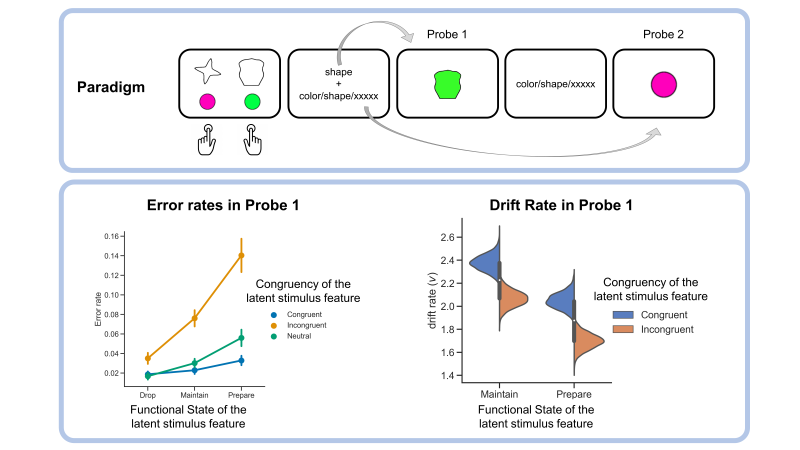
Working memory (WM) is the cognitive powerhouse behind our ability to maintain and manipulate information internally, even when it's no longer present in the environment. Traditionally, WM has been studied for its capacity limitations and its role in guiding behavior. However, current research highlights another dimension: its flexibility. In a recent study published in Cognition, researchers from the CIMCYC in collaboration with researchers from Humboldt University of Berlin, Ghent University and University of Nottingham, delve into the intricate mechanisms of WM flexibility, shedding light on how our cognitive system prioritizes and manages relevant information that goes beyond visual memories.
Previous research has shown that WM can dynamically adjust the level of priority of an item held in memory based on its behavioral relevance, which has led to the concepts of 'active' and 'latent' states within WM. Active representations are those currently prioritized to influence ongoing behavior, while latent items are maintained but should not drive behavior—at least not immediately. While previous research in visual WM has shown how attention can dynamically modulate relevant representations, this study extends the investigation beyond visual memories to planned actions and stimulus-response associations. By examining the interplay between attention and different representational formats, researchers aimed to understand how task relevance affects the implementation of action plans.
The results of this study demonstrate how internal attention oriented to encoded stimulus-response associations modulates their prospective relevance and, consequently, their impact on ongoing behavior. The study uncovers the impact of latent items on active ones, revealing that the more likely a latent stimulus-response association is to become relevant in the future, the greater its interference with ongoing behavior. These findings suggest a continuum of representational states within WM, challenging the traditional dichotomy between active and latent representations.
This research provides valuable insights into the flexible nature of working memory, paving the way for a deeper understanding of how we prioritize and manage information to adaptively guide our behavior.
Full reference: Formica, S., Palenciano, A. F., Vermeylen, L., Myers, N. E., Brass, M., & González-García, C. (in press). Internal attention modulates the functional state of novel stimulus-response associations in working memory. Cognition. https://t.co/xsnunSenBl
Contact:
Carlos González García (@email)
Ana F. Palenciano (@email)
